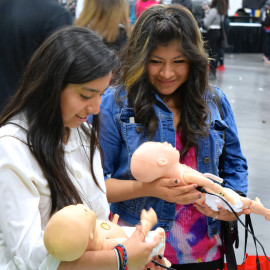
As Oregon struggles to graduate more high school students on time, experts say connecting students to the world of work is a proven factor in putting them on track to earn a diploma.
Just 74 percent of the class of 2015 graduated in four years, a gain of 2 percentage points after five years of failing to move the needle.
Yet educators point to mounting evidence that exposing students early to a chosen career pays off, according to a recent news article by Betsy Hammond of The Oregonian/OregonLive:
In Oregon’s class of 2014, 88 percent of the 14,000 students who took at least two related hands-on career courses graduated on time, 16 points better than the state average for all students, Hammond reported.
Taking three career-tech classes provides an even bigger boost in graduation rates among boys, who graduate at a distinctly lower rate than girls, 70 percent vs. 78 percent, she said.
Educators point to gains in various school districts but say more money is needed to achieve similar progress across the state. Though the state this year doubled grants to expand high school career-technical programs to $9 million, the amount funded just one-third of what high schools requested.
If voters approve Measure 98 on the Nov. 8 ballot, high schools would receive $800 per student if they agree to do three things: expand career-technical courses, add courses that carry college credit and do dropout prevention — including carefully tracking grades and attendance beginning in ninth grade, Hammond reported.
“What we need is not the hodgepodge we have created,” said Toya Fick, head of the student advocacy group Oregon Stand for Children. “We clearly are in a place where we need a lot of this happening in all of our high schools.”



